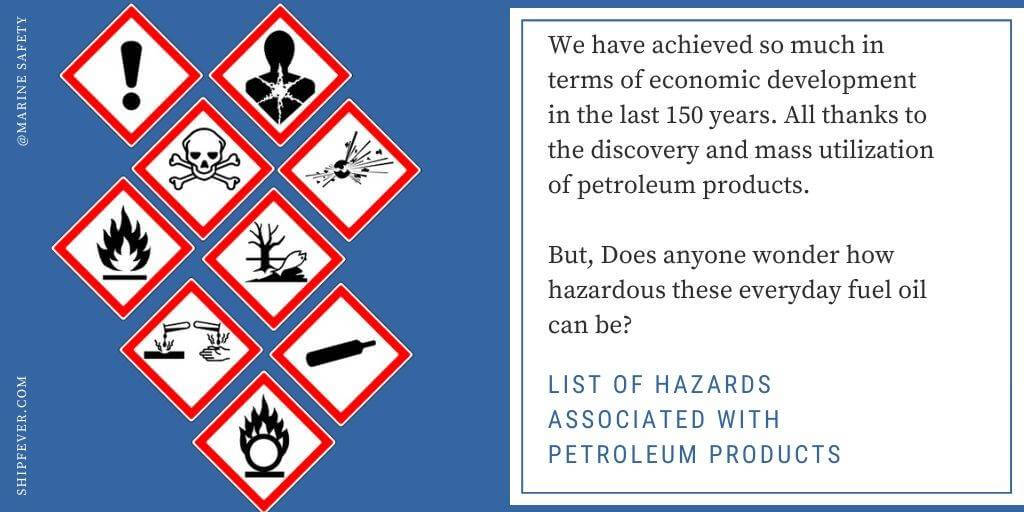Last Updated on July 5, 2020 by Amit Abhishek
We have achieved so much in terms of economic development in the last 150 years. All thanks to the discovery and mass utilization of petroleum products.
Whether its gasoline ( petrol ), diesel, kerosene or marine diesel oil; we are familiar with these names.
We use so many of its types and so frequently that we don’t give them a second thought.
Does anyone wonder how hazardous these everyday fuel oil can be?
When thinking about the hazards associated with petroleum products or at least fuel oil; the max one can think of is the associated fire hazards.
But it’s just one of many associated hazards you have heard off quite often in popular culture ( everyday talks ).
All hazards associated with petroleum and its products can be classified into four main types; fire hazard, environmental hazards, human hazards, and Ergonomic Hazards.
Recognizing associated hazards is thus essential in their control and prevention of loss of money, equipment, and human capital.
This article will provide a quick review of associated hazards; preventive measures and emergency steps.
Classification of Hazards Associated to Petroleum Products
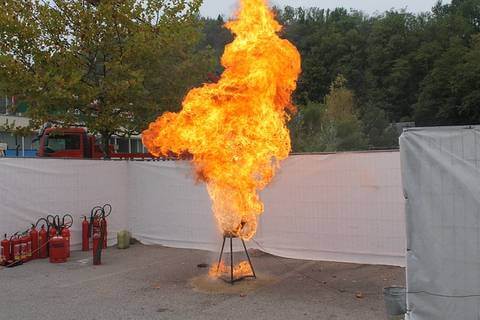
1 ) Fire And Explosion Hazards
Raw petroleum and its products are a complex mixture of cycloparaffins, paraffinic and aromatic compounds.
In its most raw form, it also contains traces of sulfur, nitrogen, and oxygen. Being mostly hydrocarbon there is always a risk of possible explosion if these flammable vapors ignite.
When we burn crude oil or its derivative petroleum products; it is the fuel vapor that ignites and not the fuel itself.
These fuel gas/vapor than can burn to reacts with oxygen in the air; to produce carbon dioxide and water vapor.
But still, they need a correct combination of air and fuel gas mixture to burn.
Now the air-fuel mixture that can burn is called flammable mixture. I have discussed in detail about flammable mixture and flammability curve in my older post; Flammability Diagram And Its Application in Tankers.
The mixture will not burn if the mixture is too lean or too rich. Being much heavier than air these gases tends to stay down in containers or tanks; even after the fuel oil is removed.
These if not properly ventilated can ignite anytime with slightest of the heat source. It is under this condition many explosions happen on tankers and refinery storage space.
The source of ignition can be anything ranging from open flames, cigarettes, electrical charges, friction, hot surface, welding and cutting tools.
Thus they must be stored in a place with an appropriate ventilation system. Furthermore, play cards must be installed on-site regarding fire hazards and all ignition sources should be restricted.
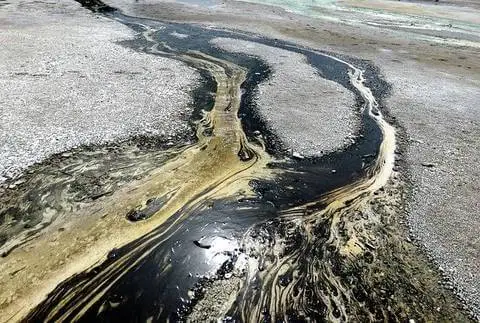
2 ) Environmental Hazards
When petroleum spills it negatively affects the ecosystem of the environment.
While most of the damage happens when a supertanker undergoes grounding, collision or just explodes.
Even a small spill in drops can contaminate drinking water; lakes and rivers for the entire community.
Being toxic in nature, It causes Acute and Chronic Toxicity to the aquatic environment. An oil spill can harm any birds, reptiles, fish, frogs and other sea creatures that came in contact with the oil.
Furthermore once spilled the oil maintains a significant impact on the food chain of the surrounding ecosystem.
Not to mention the money and effort spent on cleaning operations on beaches and at sea.
That is why there are federal and international laws in place to quickly contain the spill. And much has been done to avoid spill due to accidents or collisions.
For example, ships are converted overtime from single-hull to double hull construction. Similarly, navigation techniques, training, and ship to ship communication are improved.
Other than that, regular inspection and preventive measures are made part of daily practice.
It is so because when spills occur, a rapid response is required. Thus appropriate training and regular drills help keep them ready for the right time.
So the level of damage can be contained and further incidents avoided in the future.
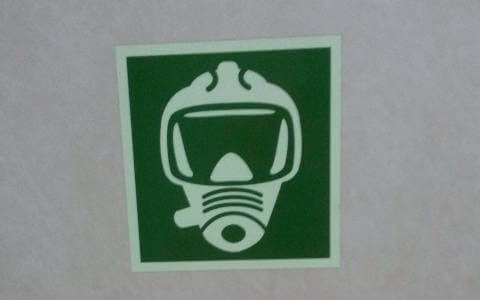
3 ) Human Hazards
Toxic in nature it is detrimental to health in case of short exposure. It can be in the form of skin contact; ingestion, through eyes and respiration.
If the exposure is prolonged irrespective of the quantity; it may also lead to death or damaged beyond recovery.
A short exposure of oil to the skin can cause dryness but if not properly washed; it can result in itching, infections, and burns.
For petroleum products containing lead; it may also cause lead positions. If exposed to clothes they can easily be soaked into fuel.
If not quickly changed and washed properly; it can expose your skin to fuel oil for longer period of time.
Avoid rubbing your eyes with any part of the hand or cloth; when working with oil as it can expose your eyes and cause burning. There may be cases where you need medical attention.
When inhaled in small quantities, it causes dizziness, poor response rate, irritation to eyes, and headache.
However, the physiological effects of petroleum gas vary; from product to product and its tolerance among different individuals.
It is often fatal to anyone exposed to a large quantity of petroleum gas. It should not be assumed since you do not smell anything means there is no leak or gas present.
They usually have varying levels of smell based on mixture; often dull your smell senses as its concentration increases.
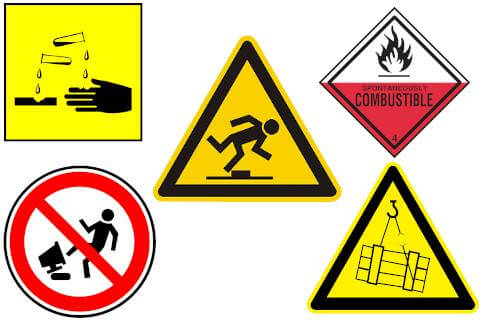
4 ) Ergonomic Hazards
Large machines and pressure pumps are required for handling petroleum products. There are also high-pressure lines and connections supporting these installations.
A person or crew working can be injured lifting a heavy item, pulling heavy loads, working in an awkward posture or performing identical tasks again and again.
In other words, ergonomics hazard is the intersection of a man with its work environment that causes pain or strain.
Such work-related injuries can be easily avoided; by planning ahead of the work, training crew, using proper tools and following safety checklist.
Maybe that is why I find it ( safety checklist ) always on the ship; working on pumps and machinery.
You may also think of spills in terms of failure and bursting of pipes.
Internal erosion or damage of lines can lead to bursting of pipes. This then results in events such as; struck-by hazards, burn ( crude oil and heavy oil are preheated before pumping ), explosion and fire.
Including ergonomics as atopic into safety consideration at the workplace can greatly reduce such unwanted accidents.
To What Amount Exposure To Fuel Gas is Considered ok?
Under no circumstance one can guarantee that; you don’t work in an environment containing traces of fuel oil vapor.
Its a bargain that even the operating crew understands; the one who is responsible for handling petroleum products. To ensure crew safety it must always be kept below the Threshold Limit Values.
Threshold Limit Value or Permissible Exposure Limit is the air quality situation up to which; it is considered safe enough to work and perform daily tasks.
The limits are given in the form of parts per million of fuel oil by volume of air in a given environment.
You can consider this as the upper safety limit!
But for best practices, all atmospheric concentrations including fuel oil is maintained as low as reasonably practicable.
On most occasions, the most moderate of two limits is used; called a Time Weighted Average.
It is calculated based on the 8-hour working day and thus; the limit for short exposure is higher than for longer duration.
Emergency Response To Petroleum Hazards
1 ) Fire Fighting
In the event of fire or explosion due to petroleum products; the first response is to extinguish the fire.
Class B type extinguishers are used for a small fire.
The extinguisher medium to be used can be anywhere from water foam, dry chemical to CO2. In any case, avoid using water on fire. It only makes the fuel oil to resurface on top of the water and burn again.
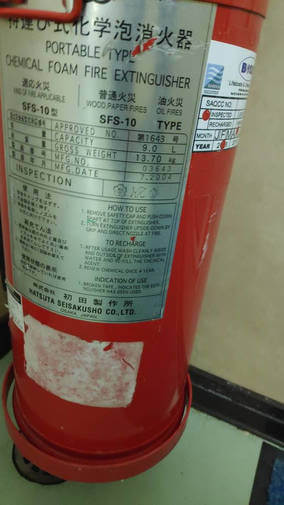
In event of such fire; it is necessary to follow Special Fire Fighting Procedures to contain the fire and its damage.
This includes steps like containing the fire to a confined space; boundary cooling, using full firefighting gear, the release of CO2 or a large amount of foam in event of a fire in the tanker itself.
That is why all tanks, pumps, fuel containers and operating areas must carry a warning sign for “Flammable”.
The operating crew must also be well trained in hand; on how and what to do under such circumstances.
2 ) First Aid
The moment one is exposed to the fuel gas; one needs an immediate first aid response. This can be either through eye contact, skin, inhalation or ingestion.
Immediately flush your eye with water for at least 10 minutes; in event of eye contact. If irritation persists imediately seek medical attention.
Similarly one needs to wear appropriate mask gear; before rescuing individuals exposed to fuel gas. Take him immediately to open-air or one should try to get out himself if he or she is still conscious.
In event the individual is not breathing; one may need to give artificial breathing. A breather or different mouth to mouth breathing techniques can be used for this purpose.
If the person has ingested or swallowed crude oil or any of its by-products; one needs to make him calm and stop him from forcing vomiting.
A small amount of gasoline or any other petroleum product when ingested; cause little trouble but if that inhaled while vomiting can cause serious condition seeking emergency medical help.
In case vomiting started spontaneously after ingestion; make sure you make him or her head placed below the hip.
This helps reduce the risk of inhaling any oil coming out with vomiting.
Give the victim a glass full of freshwater to rinse his or her mouth completely. If possible he or she should also gargle after rinsing the mouth.
Consult a doctor and take medical care while monitoring signs of toxicity in the form of; repetitive vomiting, drowsiness, slurred speech, weakness, blurred vision, loss of consciousness, etc.
In the event there is skin contact; first, rinse your exposed body part with fresh water and change or remove your contaminated clothes. Apply mild soap water on the exposed area; in event of burn apply some antiseptic after that.
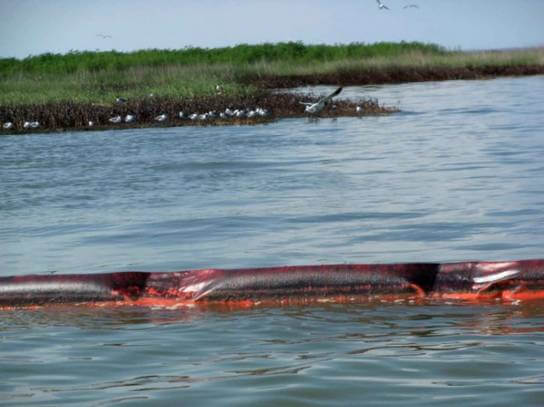
3 ) Containing Oil Spill
When oil spills over the sea it spreads quickly over the surface of the sea. Even on land, it spread quickly once it reaches water bodies. The cost of the entire cleaning operation depends much upon its spread.
So the first priority of operating crew and additional cleaning operators is to; first, stop the source and contain the spread of oil.
Whether on land or at sea the first thing to ask for is to close all pump operation. Wher its transfer of oil, ballasting, oil transfer or bunkering.
Plug all scuppers with scupper plugs and put sawdust on top of it. Ask for additional assistance to double down on the rapid response.
Remember it is the rapid directed response that actually helps contain the spread of oil.
Use oil absorbent material, containment pipes, and material specially designed to contain their movement. On ship follow the procedure given under the SOPEP plan using the given tools.
Once the oil spill has been stoped start working on the cleanup operation. Inform your supervisors and local authority. Collect the spread of oil in designated containers or SOPEP drums.
But many times there is a small leak in the system which can remain undetected for a long time. To avoid such a situation proper records must be maintained for all oil transfer, discharged or incinerated.
Due to the danger, oil spills cause to public health and the environment; there are several international and local rules concerning the oil spill. Example; Prevention of Pollution of the Sea by Oil, Oil Pollution Act of 1990, Spill Prevention Control and Countermeasure (SPCC), etc.
Together they make laws and regulations to reduce pollution due to oil. Specific plans such as SOPEP and SPCC include specific steps; that are required for prevention, control and mitigating oil spills.
Also Read:
- What Are Marine Fenders? Its Types & Function
- Indicator Diagram | Its Types, Importance & Procedure
- Marpol Annex 1 | Prevention of Pollution From Oil At Sea
- Best Boat Fenders of 2019 | Review & Comparison
- Marine Terminology For Boat Ships & Sailors

